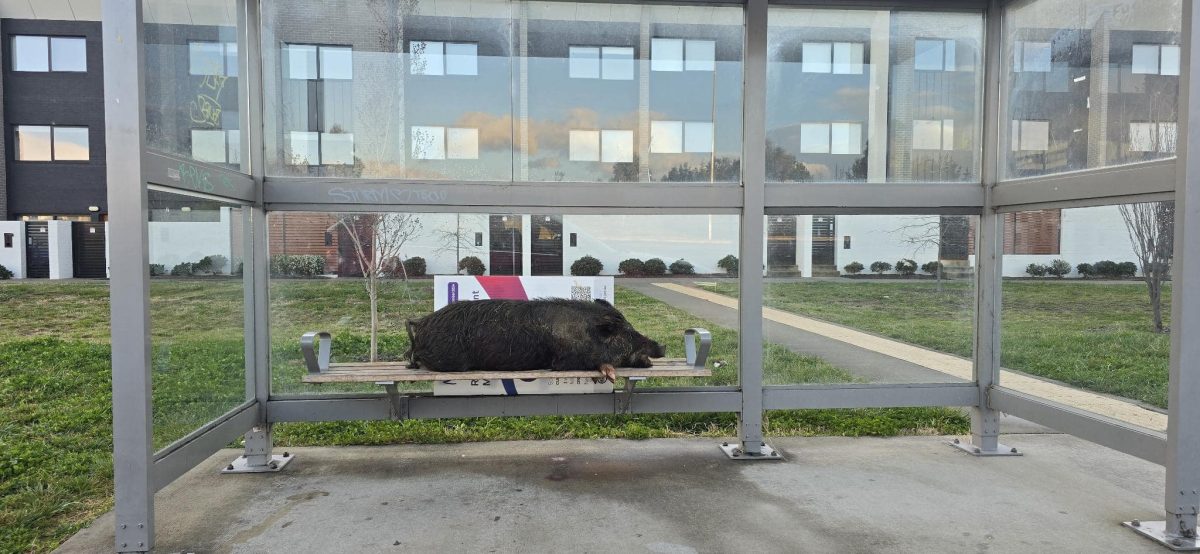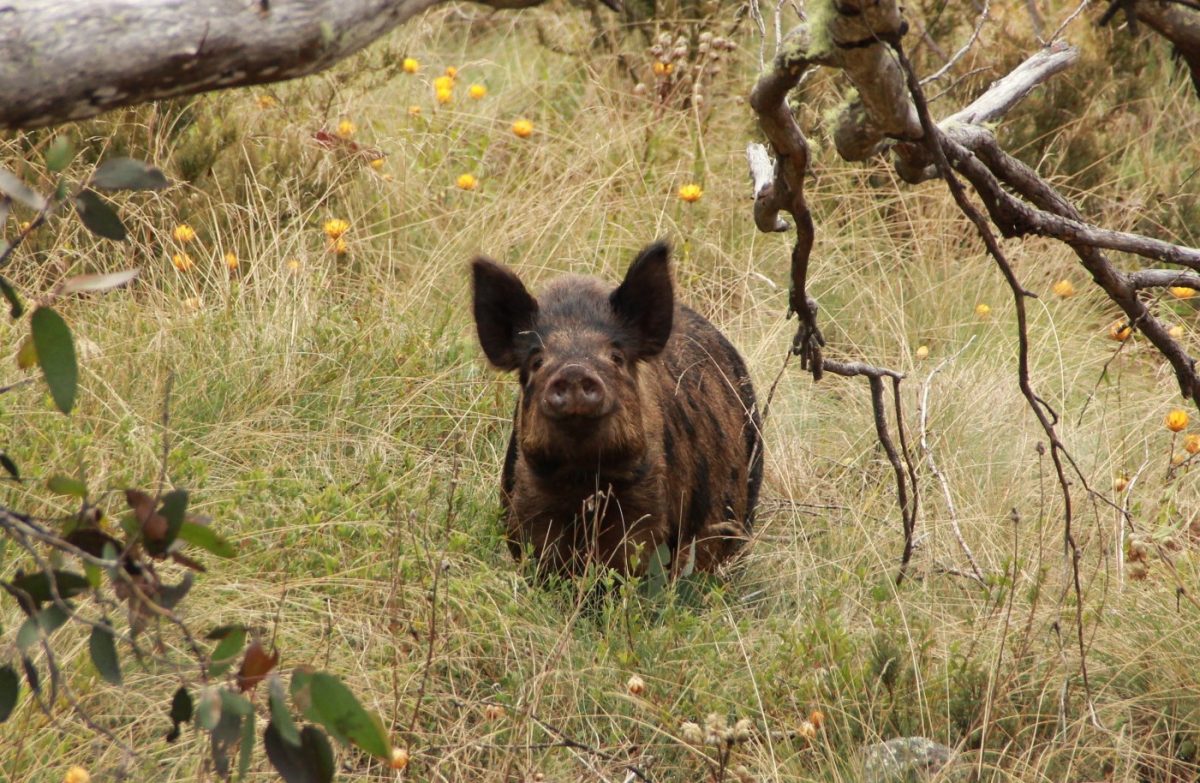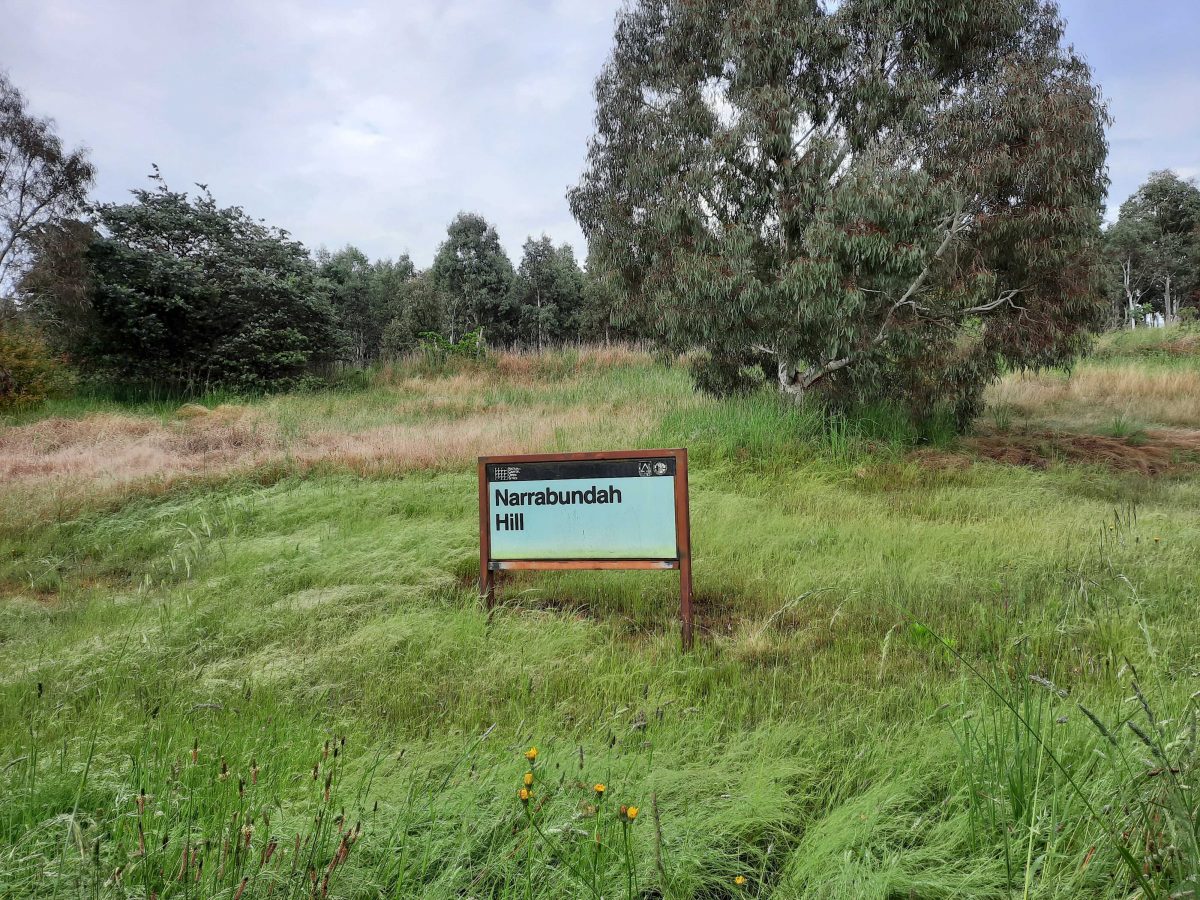
Wild boar dumped in Coombs bus shelter. Photo: Adam Stipancic.
Someone went the whole hog over the weekend.
A dead boar, more than a metre in length, was spotted dumped in a bus shelter in Coombs in the Molonglo Valley on Saturday (17 August).
Adam Stipancic posted a photo of the spectacle to the ‘Our Molonglo Valley’ group on Facebook.
“Anyone missing a pig?” the caption read.
“Spotted this morning in Coombs. I’ve seen some strange things in this area, but this takes the cake.”
Comments joked about how it was “waiting for the bus” or on its way to becoming someone’s “Sunday roast”, but others suggested it wasn’t the first time locals have had a run-in with wild pigs.
“I think we have a serial dumper in our midst,” one read.
“Someone dumped one on a chic’s [sic] doorstep in my old complex down the road on Pearlman Street, but this is wild,” another read.
Others claimed to have seen the bodies of wild pigs dumped in the bushland between Cotter Road and the edge of the suburbs of Holder and Duffy and that there are “plenty running wild up on Mount Stromlo”.
“Dead wild pigs that, I assume, have been shot in the reserves and national parks around Canberra by boofheads who dump their bodies,” a comment read.

A feral pig in Namadgi National Park. Photo: EPSDD.
Wild pigs are considered a pest in the ACT and the subject of regular “vertebrate control programs” – or culls – by government rangers.
“Ground disturbance by pigs creates bare ground, contributing to erosion and weed invasion as well as causing loss of visual amenity for park visitors,” the ACT Government’s Environment, Planning and Sustainable Development Directorate (EPSDD) website reads.
“On rural land, they plough up pasture, damage fencing and are a potential vector for several serious endemic and exotic livestock diseases.”
For more than 30 years, the team at Namadgi National Park have conducted feral pig baiting and trapping, which is said to have led to a “significant decrease in the feral pig population”.
ACT Parks and Conservation performs ground and thermal-assisted aerial culling (TAAC) programs annually, as well as baiting and trapping measures.
It also issues traps and baits to landowners with the required accreditations.
The pigs are most common in the Namadgi National Park and Molonglo River corridor but have also been spotted at Tuggeranong Hill, Mulligan’s Flat and, in recent years, on Narrabundah Hill at the top of Duffy.
In November 2022, rangers set traps in the wooded reserve off Eucumbene Drive after local dog walkers spotted the tell-tale green droppings of feral pigs and claimed their dogs had been left shaken after encounters with the animals.
The Environment, Planning and Sustainable Development Directorate’s (EPSDD) Invasive Animals and Overabundant Wildlife manager, Mark Sweaney, told Region at the time that a number of wet seasons had led to an explosion in numbers.

Dog walkers claim their pets have had run-ins with wild pigs on Narrabundah Hill in Duffy. Photo: Ian Bushnell.
Feral pigs are estimated to cost Australia’s agriculture industry at least $100 million a year in infrastructure and control measures.
In December 2019, the Australian Government provided $1.4 million over 3.5 years to Australian Pork Limited (APL) to establish a National Feral Pig Management Program. This was recently extended to June 2025.
The program is said to “ensure that the most effective feral pig control methods are understood, used and applied according to national Model Codes of Practice and Standard Operating Procedures”.
EPSDD and the Transport Canberra and City Services (TCCS) directorate were contacted for comment.












